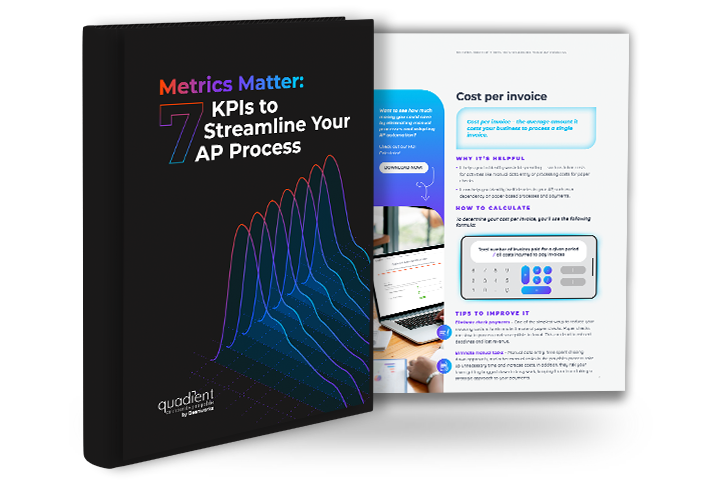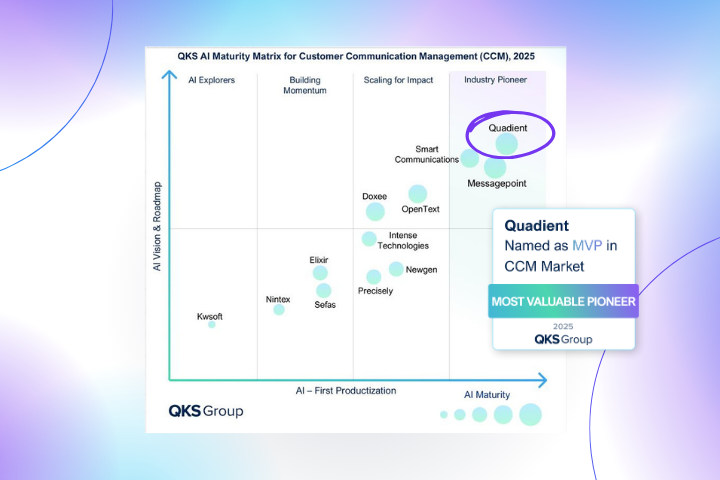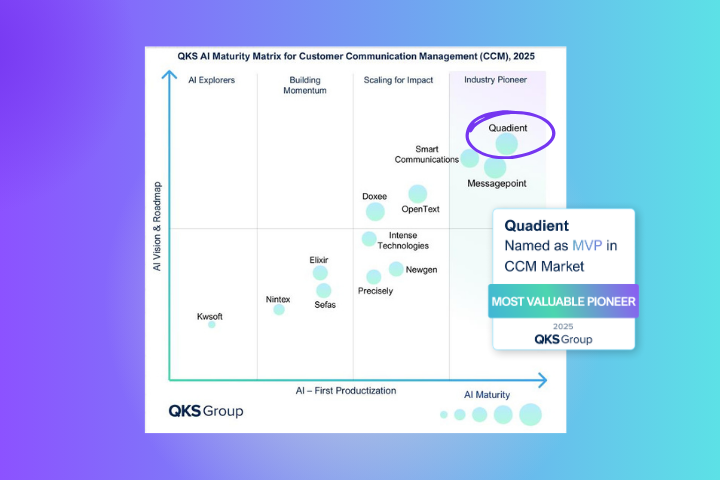
Like many teams that rely on legacy processes, AP professionals often struggle with inefficiencies and manual workflows. It’s hard work just to stay afloat — leaving no time for strategic input. All these struggles lead to frustration, even more manual processes, and employee burnout.
Tracking and measuring an accounting team’s KPIs (key performance indicators) can help. Taking strategic and measurable steps to improve inefficiencies, increase agility, reduce costs, and mitigate risks can help increase the overall value and sense of purpose of the department by aligning them with the organization's overarching goals.
In this blog, we’ll explore the top five KPIs that every AP department should track in order to become more efficient, effective, and relevant to an organization's bottom line.
Featured Resource: How to track, benchmark, and improve your Accounts Payable KPIs

Download Your Free eBook
1. Invoice processing time
Organizations that process invoices manually can take up to 25 days to achieve invoice approval. The impact of these delays can range from wasted time on approval follow-ups to vendor-relationship damage — contributing to the loss of early payment discounts and delays closing month-end.
Here’s how to your calculate invoice processing time:
- Record the date and time each invoice is received. You can do this in a spreadsheet or in a document management or workflow system.
- In that same location, document when each invoice is approved and paid.
- Subtract the two dates to find the number of days that the process took.
Use this process to calculate the average across all invoices over a period of time (e.g. monthly, quarterly). That number is your average invoice processing time.
How AP automation can help: Organizations with automated AP processes can shrink their invoice processing time down to 3-5 days.
See how Radisson Blu Minneapolis saved 50% of their time with Quadient AP.
2. Cost to process a single invoice
Processing invoices manually can be expensive when you factor in hidden costs such as data entry, matching, and follow-ups. The average cost to manually process an invoice can be as much as US$15. With better management, tracking, and the use of machine-learning technology, highly-efficient teams can drive that cost down to an average of US$2.36.
Here are three options to calculate your invoice processing cost:
- According to Levvel Research, the average cost to manually process a single invoice can be as much as US$15. These costs can quickly add up with manual invoice processing, particularly for businesses that handle a large volume of invoices.
- Some organizations use a commonly-accepted estimate that the cost of processing a single invoice is equivalent to 30 minutes of employee labor, giving a range of US$12 to US$35 per invoice.
- Utilize our AP ROI calculator:
- Checking out the detailed instructions in this article
How AP automation can help: Automated invoice processing significantly reduces these costs. On average, businesses save US$13 for each invoice processed through automation. For companies that process 500 invoices per month, that amounts to an annual savings of US$78,000.
See how Gateway Property Management enabled both time and cost savings with Quadient AP.
3. Invoice exception rate
Invoices with errors or inaccuracies (like coding errors or duplicate POs) slow down the AP process. It costs your team time to spot the errors, track them down, and fix them. Once you’ve put your finger on the most frequent types of exceptions, you can work on your action plan to resolve them.
Here’s how to calculate your invoice exceptions per month:

- Keep a record of each exception as it happens.
- Take the number of exceptions per month divided by the total invoices processed per month.
- Multiply that number by 100 to find your invoice exception rate.
How AP automation can help: Automated invoice processing helps you process invoices with 99% accuracy to lower your exception rate. See how Quadient AP can reduce your exception rate with invoice automation.
4. Invoice to PO rate
Uncategorized invoices or invoices that don’t correspond with a PO slow the approval process. Not only that, but invoices without purchase orders could indicate unauthorized purchases — which could be an indicator of fraud.
Here’s how to calculate your invoice to PO rate:

- Keep a record of how many invoices are linked to a PO and how many are not, during a specific period of time (one month, two months, etc).
You can do this in a spreadsheet or create a custom field in your financial system. - Divide the total number of invoices processed without a PO by the total number of invoices processed.
- Multiply that number by 100 to get your invoice to PO rate.
How AP automation can help: Speed up approvals and reconciliation with Quadient AP’s automated two or three-way match.
See how BGC Okanagan streamlined their three-part manual purchase order approval process with Quadient AP.
5. Budget variance
Proposed budgets aren’t always accurate. During the course of a month, or longer, it’s not uncommon for actual expenditures to vary from their initial forecast. By regularly comparing your budget to your actual spend, you and your accounting team can clearly see your current position compared to your financial goals for that same period of time.
Analyzing the variance between planned spend and actual spend will enable you to:
- Adjust your budget for the upcoming year
- Identify areas to reduce expenses or increase income
- Determine if you require additional funding
You can calculate variance for several different line items in your budget, such as revenue, fixed costs, variable costs, and net profit.
Here’s how to calculate your budget variance:

- Subtract the actual spend from the planned budget spend for each line item over a given period (e.g. one month).
You can do this in a spreadsheet or use your financial system. - Subtract the difference between the planned budget and the actual budget to determine the variance.
How AP automation can help: Improve control and insight over your planned spend, and simplify your PO process to get greater control over your budget variance with Quadient AP.
What to consider when establishing your own KPIs
KPIs are most effective when they are quantifiable. This will help you better gauge your team’s AP performance relative to a goal that aligns with your business strategy. It’s also important that the KPIs you choose inspire and elevate your team. Here’s a great way to get started:
- Use Quadient AP’s ROI calculator to help you calculate the amount of time and money you currently spend on manual AP processes.
- Share these numbers with your team.
- Have a discussion to determine which KPIs would be most impactful to your team.
Achieving excellence in these areas can be significantly enhanced by leveraging the right automation solutions such as Quadient AP, which can integrate with many accounting systems such as Sage, Netsuite, Quickbooks, or Microsoft Dynamics.
Featured Resource: How to track, benchmark, and improve your Accounts Payable KPIs
Are you ready to automate?
Quadient’s AP Automation software empowers your team to meet and exceed your KPIs thanks to invoice automation, streamlined expense and payment management, and enhanced PO workflows. If you’re ready to adopt an automation solution like Quadient AP we’re here to help. Book a demo today!








